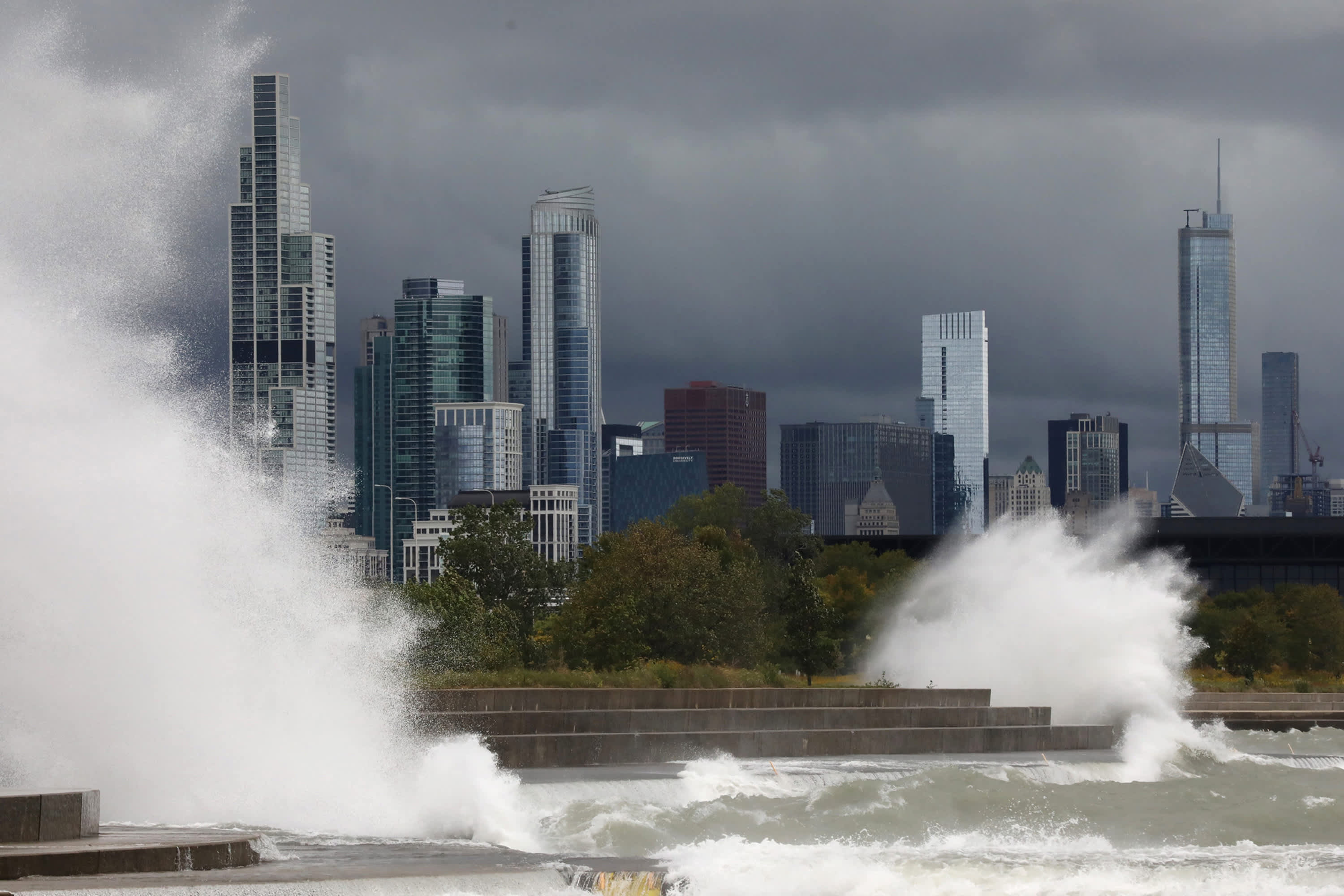The Great Lakes are often called the nation’s third coast, and the past five years in the region have been the wettest on record.
While the lakes don’t exactly correlate to rising sea levels, Chicago now sits in just as precarious a position as oceanfront cities. Heavier rainfall and more frequent droughts are now causing extreme swings in the water levels of Lake Michigan and the Chicago River, wreaking havoc on the city and prompting urgent action to find a fix.
In the winter of 2020, the water level in Lake Michigan hit a record high and intense rains just kept coming. Waves crashed over Lakeshore Drive, sending water up to the third floor of some buildings. The Chicago River also began to overflow into downtown.
The balance between the river and the lake has always been delicate, ever since the city dug canals over a century ago to keep waste from flowing from the river into the lake, which supplies the city’s drinking water.
A backup system for flooding was also created: locks that reverse the river back into the lake when the river gets too high. Last year’s rainfall, however, was so severe that for the first time that backup system didn’t work. The lake was higher than the river level, so water could not be reversed.
Lockmasters had to wait until the river rose above the lake before they could start the reversal process. That delay was destructive. Downtown Chicago suffered massive flooding, even knocking out power at the Willis Tower.
Experts say this was not a once-in-a-lifetime event, but a sign of what is to come, as climate change causes heavier rains and more intense storms.
“The biggest risk is that these changes in the climate, in hydrology, or the water levels are going to exceed the infrastructure or the capacity of cities, coastlines and homes to handle those changes,” said Drew Gronewold, an associate professor at the University of Michigan’s School for Environment and Sustainability.
Gronewold said Chicago and other cities around the Great Lakes are all in danger of not being able to handle these extreme highs — and extreme lows. Just seven years before that storm, the water in Lake Michigan hit a record low due to a prolonged drought. That threatened the city’s water supply as well as shipping, critical to the economy of the Midwest.
“When water levels go down, they have to do what’s called light load. They have to reduce the amount of cargo they can carry, and they effectively lose millions if not billions of dollars,” said Gronewold.
After the 2020 flooding, the U.S. Army Corps of Engineers installed large concrete barriers along parts of Lake Michigan that border downtown. This was necessary even after the corps began reinforcing Chicago’s shoreline in a half-billion-dollar project that started 20 years ago. Now it is launching a new multiyear effort funded by the EPA to evaluate future conditions, factoring in climate change.
“We’re trying to forecast what those conditions will be in the future so that we can plan for those conditions and create resilient designs,” said David Bucaro, chief of the project management section with the Army Corps of Engineers, Chicago District.
Those could include structural or natural features. The city is now working to plant tens of thousands of trees that can also help to capture the rain where it falls and keep it from all flowing into the river.
Chicago’s Metropolitan Planning Council has been pushing the city to reduce its carbon footprint, because the only real fix locally is to limit warming globally.
“A lot of people look at the Midwest like it’s a safe bet for the future of climate change, but if we’re having this problem, it’s maybe just not as safe a bet as people have been thinking,” said Justin Keller, manager at the Metropolitan Planning Council.
“The city and the Army Corps are hoping for more funding from the trillion-dollar infrastructure bill still making its way through Congress. Infrastructure designs of the past will no longer do, and while new research on rainfall and drought around the Great Lakes is certainly helpful, engineers need funding to implement all that learning into a critical fix.”
“I would argue that the economy of the Midwest depends entirely on water,” said Gronewold. “We really need to be paying more attention to the future of this area and, in particular, how we’re going to improve the infrastructure to handle these changes.”
